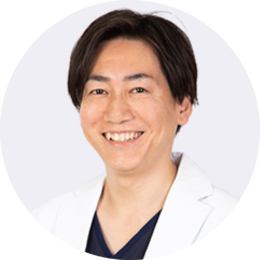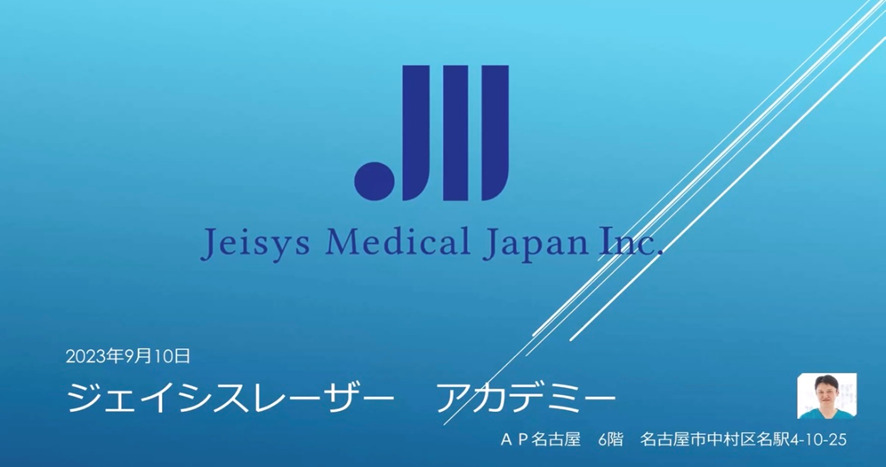
Thank you for visiting the website of Jeisys Medical Japan.
Laser treatment can be used for various skin problems, improving spots, bruises, and moles. As heat can be delivered to the hair follicles, some patients seek treatment for total body hair removal and beard hair removal.
Yet, laser therapy carries a risk of side effects with certain power levels, so practitioners need to use good situational judgment.
In this issue, Dr. Kouji Nishibori, Director of Nishibori Plastic Surgery, will introduce the purpose and risks of laser treatment.
- INDEX
What is a laser [Basics] (01:46~)
Laser stands for “Light Amplification by Stimulated Emission of Radiation”, an optical amplification by induced radiation.
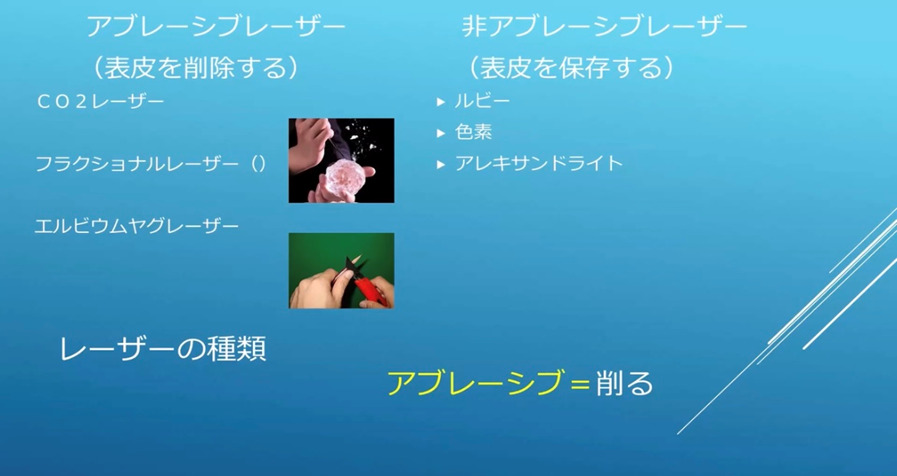
There are two types of lasers: ablative and non-ablative lasers.
Abrative lasers are lasers that shave the surface of the skin and include CO2 lasers, fractional lasers, and erbium lasers. It is possible to remove the affected area by shaving the epidermis and treat it to create a more youthful impression.
Non-ablative lasers, in contrast, are skin-protecting lasers. TriBeam and Laser Toning are such examples, but when the power is increased, they become ablative lasers. Understanding what characteristics a laser has is important since there are many different types of lasers.
Non-ablative lasers include ruby lasers and dye lasers, which are used to treat spots and bruises.
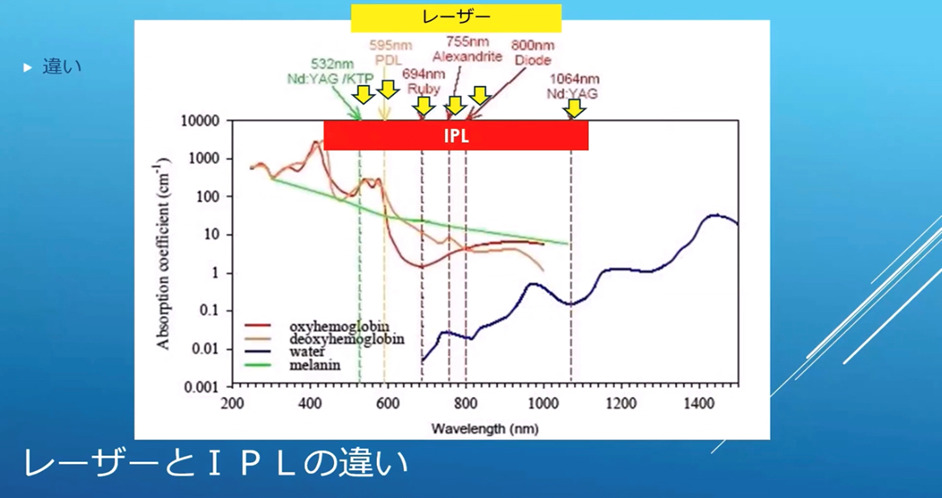
Laser’s other feature is that it uses wavelengths to act on specific skin layers and symptoms.
Although similar to PhotoFacial® (IPL), there is a difference in wavelength between laser and PhotoFacial®.
Lasers can output intense wavelengths to a point, allowing for treating dark spots. Meanwhile, PhotoFacial® can deliver wide wavelengths at low power and has fewer side effects, but may not be as effective for certain conditions.
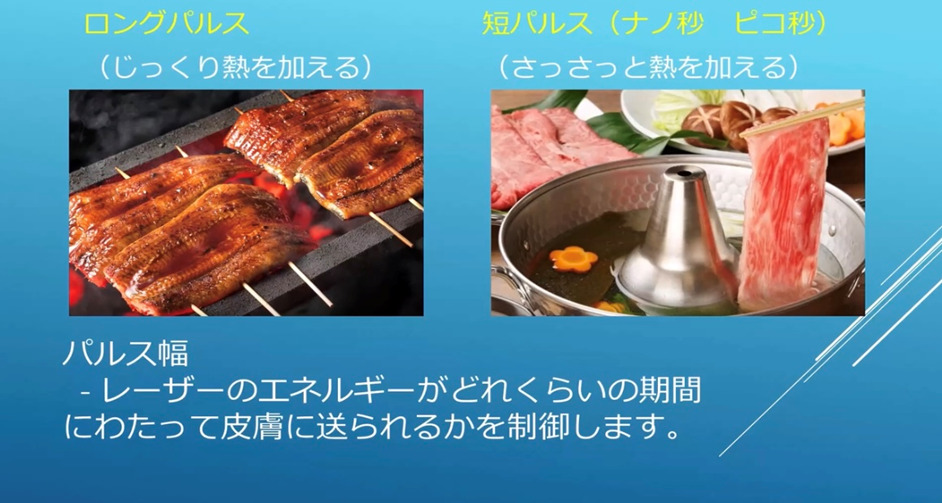
There are long-pulse and short-pulse pulse widths that often appear in laser therapy descriptions.
Long pulse is a method of slowly applying heat to the skin. It can deliver heat to the hair follicles , and is used in hair loss treatment.
Short pulse, in contrast, applies heat quickly. It irradiates the surface in a very short time, such as nanoseconds or picoseconds. Changing the pulse width allows control over how long the laser energy is delivered to the skin.
Purpose of laser treatment (11:31~)
The objectives of laser treatment are as follows
Pigmentation improvement
Skin tightening
Skin rejuvenation
Scarring improvement
Hair removal
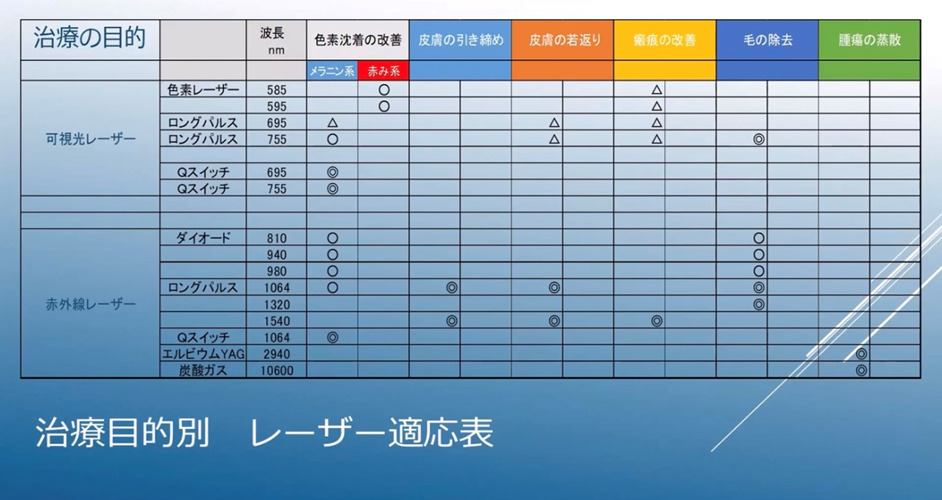
The type of laser depends on the purpose of the treatment.
Laser of visible light (695㎚ and 755㎚ waves) and infrared laser (1,064㎚ waves) are effective in improving pigmentation and tightening the skin.
An infrared laser diode or long pulse ( 755㎚ and 1,064㎚ waves) can be used to remove the hairs. In addition, the CO2 laser reacts to water and can transpire tumors.
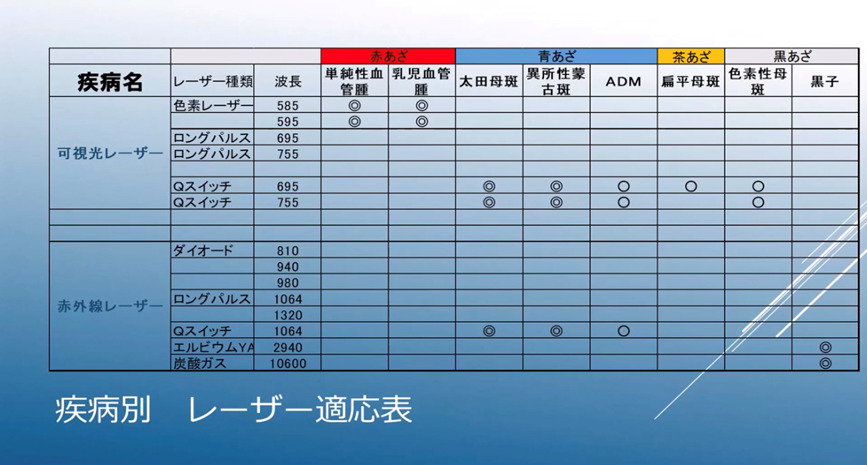
The effective wavelength depends on the color of the skin. When treating bruises, it is important to change the wavelength depending on the type of bruise.
Red bruises: 585㎚ to 595㎚.
Blue bruises: 695㎚ to 755㎚, 1,064㎚
Brown bruises: 695㎚, 1,064㎚, 1,064㎚
Black bruises: 695㎚ to 755㎚
Erbium and carbon dioxide lasers are suitable for treating moles.
Laser side effects and risks (13:34~)
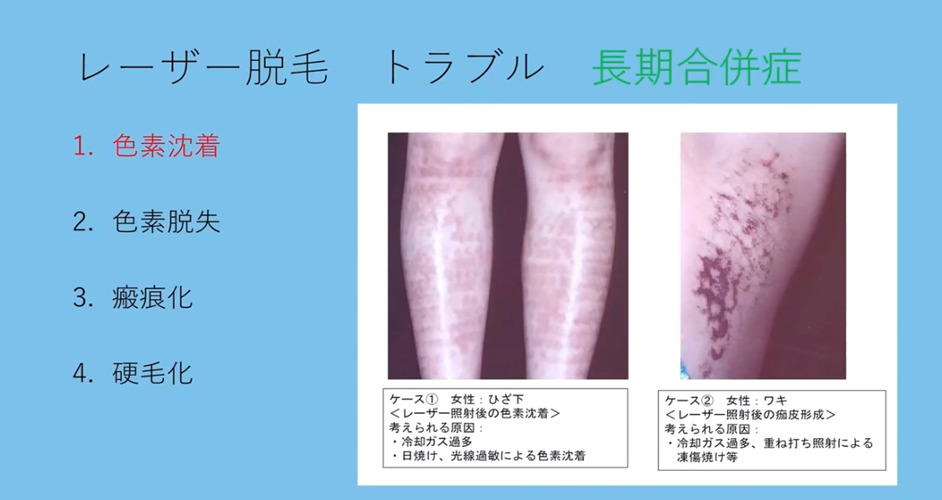
Laser hair removal has the risk of pigmentation as a long-term complication. To avoid pigmentation, do not apply too much heat and the appropriate wavelength should be selected.
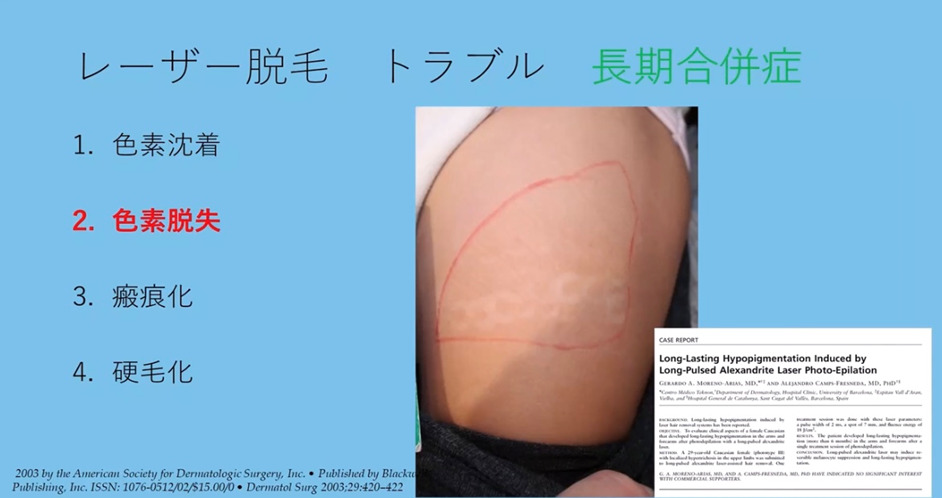
Contrary to pigmentation, laser hair removal may also cause skin color to turn white.

Incorrect output or treatment with laser hair removal increases the risk of scarring. Practitioners must instantly determine the appropriate output as laser treatments can lead to problems such as being sued for scarring.
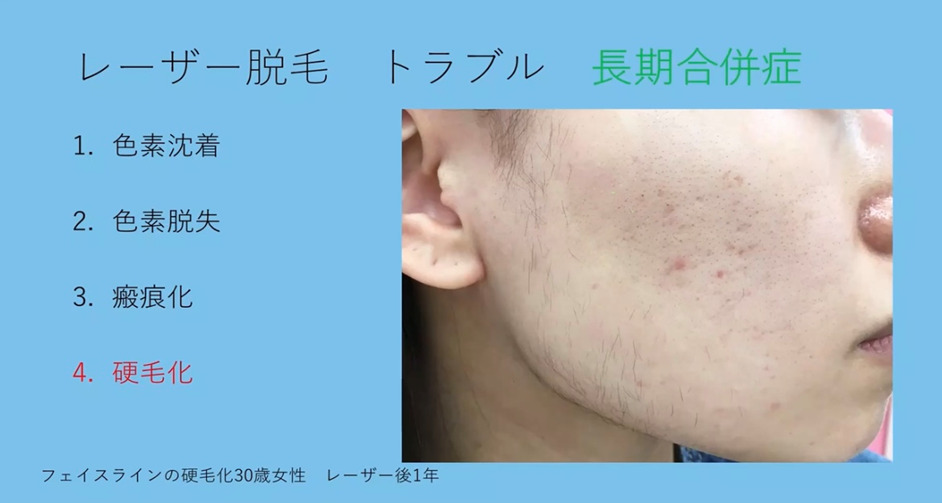
The hair may grow thicker despite laser treatment for the purpose of hair removal. This can be caused by many factors, including wavelength, fluence, and the nature of the hair follicles.
Risks of hard hair growth should be explained to patients in advance, it can occur to anyone. If hairs become thicker with our laser procedure, they are removed one by one by needle hair removal.
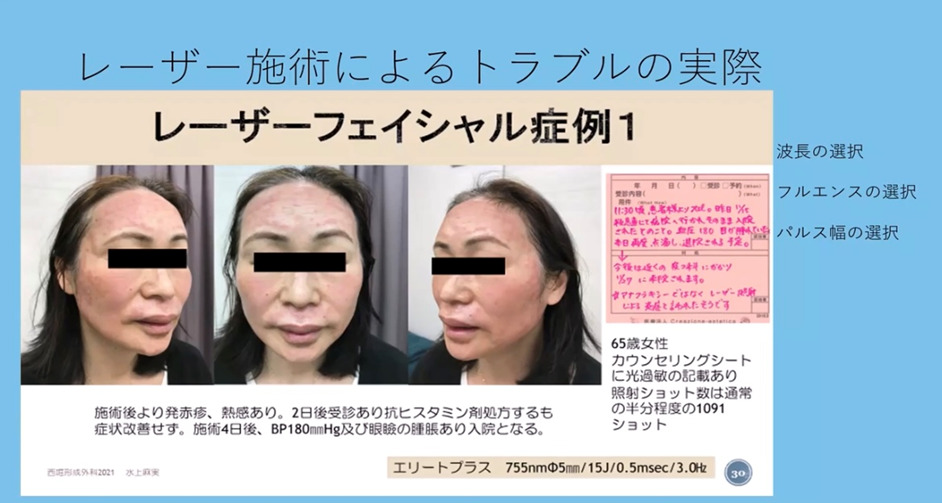
Laser facial caused a case of redness and burning on the entire face after the procedure, and the eyelids swelled up a few days later. This case may have been caused by photoallergy, so a medical interview is important to confirm the patient’s symptoms and allergies.
What is Laser Therapy [Clinical] (19:41~)
Next, we will introduce the features and case studies of Jeisys products.
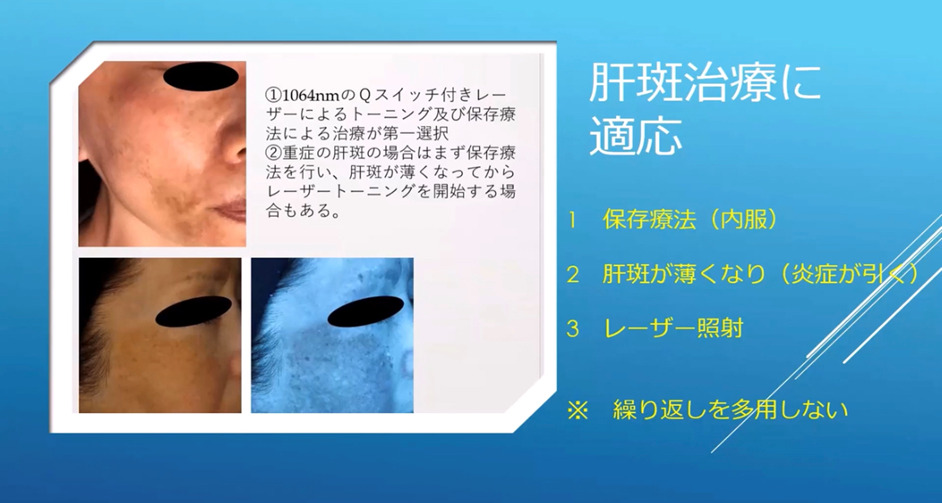
TriBeam is a product used mainly in the melasma treatment. While some have long argued against the melasma treatment, if done properly, the symptoms can be expected to improve.
Previously, laser treatments were performed every 1-2 weeks, which made it difficult for melanin to rebuild so risk of complications was high.
To improve melasma with laser treatment, take vitamins and tranexamic acid, and re-irradiate when the inflammation has subsided.
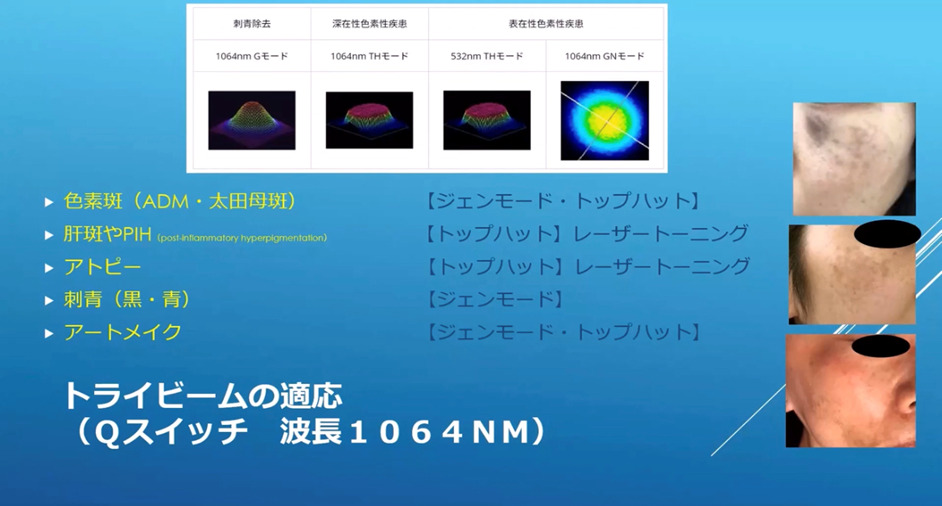
TriBeam is effective in improving melasma as well as hyperpigmentation, dyschromia caused by atopic dermatitis, and tattoos. Switching laser mode allows the central output to be intensified or the entire area to be irradiated.

In fact, a patient having monthly melasma treatment 5 times in total had a brighter skin and improved pigmentation.
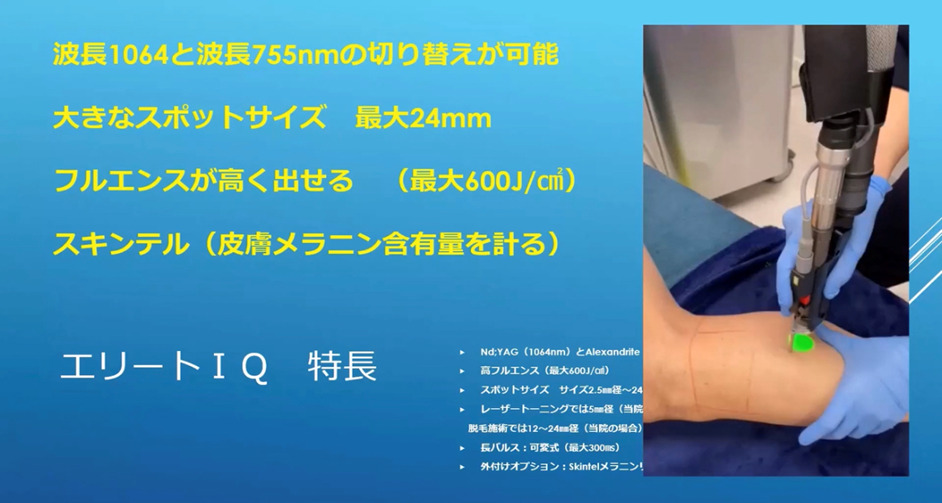
The Elite IQ is a hair removal device for long-term hair reduction; it can switch between 1,064㎚ and 755㎚ wavelengths and can deliver spot sizes up to 24 mm. It also has a fluence output of up to 600 J/cm2.
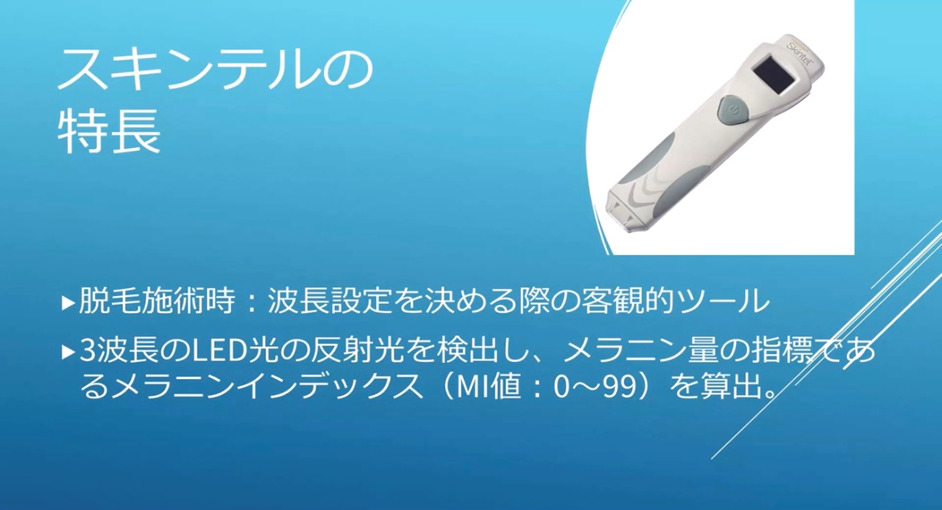
The Elite IQ is equipped with a SkinTel® to measure melanin content of the skin. The skin type is displayed on the screen when Skintel® is applied after putting gel on the area to be measured. Once the information is reflected in Elite IQ, the system determines the skin’s Fitzpatrick skin type and automatically sets the laser. Please watch the video to learn more about our products and cases.

